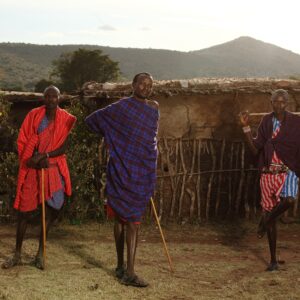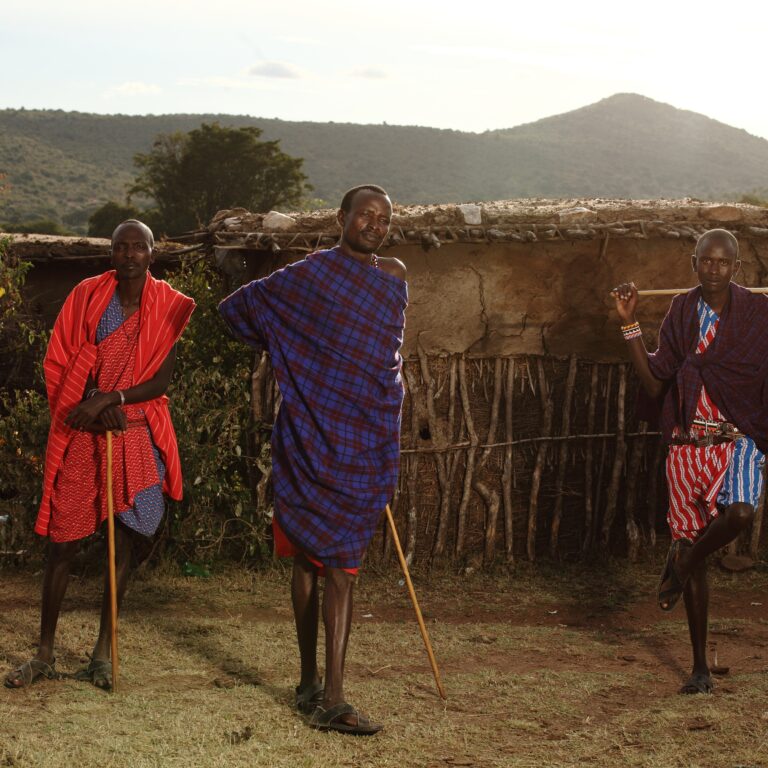Exploring Tanzania: A Journey Through Its Travel Seasons.
Tanzania, a country known for its diverse landscapes, vibrant culture, and unparalleled wildlife, offers a unique travel experience throughout the year. Understanding the distinct seasons can greatly enhance your visit, allowing you to choose the ideal time based on your preferences and interests.
1. Tanzania in Green Season (January & February):
The beginning of the year brings the lush and vibrant Green Season to Tanzania. January and February mark the short dry season, where the landscape is rejuvenated by the previous rains. The vegetation is lush, and the wildlife is abundant. This period is ideal for bird enthusiasts, as migratory birds flock to the country, creating a symphony of colors and sounds.
- Key Highlights: Best Travel Season to Visit Tanzania
Lush Landscapes: The scenery is at its most picturesque, with greenery dominating the landscape.
Birdwatching: When is the tourist season in Tanzania? Witness the arrival of numerous migratory bird species.
Fewer Tourists: Enjoy the tranquility of the parks with fewer visitors compared to the dry season.
2. Tanzania in Green Season (March):
March continues the Green Season, transitioning into the long rains. While the rainfall increases, it doesn’t deter travelers seeking a unique and vibrant experience. The lush landscapes persist, creating a stunning backdrop for wildlife encounters.
- Key Highlights: When to visit Tanzania
Green and Vibrant: Experience Tanzania in full bloom, with greenery stretching as far as the eye can see.
Photography Paradise: Capture stunning images of wildlife against the vibrant backdrop of the lush environment.
Cultural Encounters: Explore local communities and cultural attractions with fewer crowds.
3. Tanzania in Long Rain Season (April & May):
April and May mark the Long Rain Season in Tanzania. While this is considered the low tourist season due to the heavy rainfall, it presents a unique opportunity to witness the country in its most pristine state. The landscapes are lush and teeming with life, but travel during this period requires careful planning.
- Key Highlights: The best time to go to Tanzania
Serenity and Solitude: Enjoy the tranquility of the parks with significantly fewer tourists.
Green Splendor: Immerse yourself in the emerald beauty of Tanzania’s landscapes.
Budget-Friendly: Take advantage of lower accommodation prices during the low season.
4. Tanzania in Dry Season (June, July, August, September, October):
The Dry Season, stretching from June to October, is widely regarded as the best time to visit Tanzania, especially for those eager to embark on thrilling wildlife safaris. With minimal rainfall, the weather is ideal for outdoor activities, and wildlife congregates around water sources, making it easier to spot during safaris.
- Key Highlights: The main three tourist seasons in Tanzania
Prime Wildlife Viewing: Witness the Great Migration in the Serengeti and explore the Ngorongoro Crater.
Balmy Weather: Enjoy moderate temperatures and sunny days for comfortable exploration.
Cultural Festivals: Experience local events and festivals that often take place during this popular tourist season.
5. Tanzania in Short Rain Season (November & December):
As the year comes to a close, Tanzania experiences the Short Rain Season, characterized by sporadic rainfall. While it’s a transition period between the dry and wet seasons, it offers a unique perspective on the country.
- Key Highlights: Tanzania Climate and Season, when to go
Transitional Beauty: Witness the changing landscapes as the short rains rejuvenate the environment.
Affordable Travel: Take advantage of lower prices and fewer crowds before the peak tourist season.
Mild Weather: Experience pleasant temperatures, making outdoor activities enjoyable.
6. Tanzania Dry Season vs Rain Season
Dry Season in Tanzania: Experience the enchanting Dry Season from June to October, where the sun reigns, and the landscapes transform into a golden canvas. Ideal for safaris, wildlife congregates around waterholes, providing unparalleled viewing opportunities.
Rainy Season in Tanzania:
Embrace the lush beauty of the Rainy Season from November to May, characterized by sporadic showers. Witness the landscapes come alive with vibrant greenery, migratory birds, and unique wildlife encounters. While road conditions can be challenging, this season offers a serene and budget-friendly Tanzanian experience.
7. Tanzania Safari – Choose between Dry Season or Wet Season
Tanzania Safari in Dry Season: Embark on a thrilling adventure from June to October, the Dry Season, where the savannahs unfold a spectacle of wildlife. Under the sun’s warmth, witness iconic migrations and spot majestic creatures congregating around watering holes in their natural habitat.
Tanzania Safari in Wet Season: Explore the untamed beauty from November to May during the Wet Season. Lush landscapes and verdant surroundings create a picturesque backdrop for unique wildlife encounters. While rain may be sporadic, the Wet Season unveils a different side of Tanzania, providing an intimate and serene safari experience.
8. Tanzania Safari Month by Month
Tanzania Seasonality, at a glance. There are two rainy seasons—the heaviest rains (called masika) usually fall from mid-March to May, and a shorter period of rain (called vuli) occurs from November to mid-January. The dry season, with cooler temperatures, lasts from May to October.
Tanzania Safari in January:
Embark on a Tanzania Safari in January to witness the Green Season’s inception. As the short dry season unfolds, the landscapes are rejuvenated, offering lush backdrops. Migratory birds grace the skies, creating a vivid tapestry, while wildlife thrives in this vibrant environment. Fewer tourists and moderate temperatures make it an ideal time for a serene and immersive safari experience.
Tanzania Safari in February:
In February, the Green Season continues its enchantment. The short dry season persists, painting the Tanzanian canvas with vivid hues of green. This month sees an influx of migratory birds, adding an extra layer of biodiversity. Tanzania Travel Seasons. The wildlife remains active, and the lush surroundings provide a picturesque setting for memorable safaris. Capture the beauty of Tanzania in its prime during this less crowded period.
Tanzania Safari in March:
March brings the transition to the Long Rainy Season. While rainfall increases, the landscapes transform into a breathtaking panorama of greenery. Tanzania Travel Seasons. Witnessing Tanzania in full bloom, this season offers a unique perspective. Despite occasional showers, the safari experience is still rewarding. For those seeking the allure of the lush, green savannahs and fewer crowds, March opens a window into a different, yet captivating, safari adventure.
Tanzania Safari in April:
April marks the heart of the Long Rainy Season, offering a lush and vibrant safari experience. While rainfall is more consistent, the landscapes are at their most beautiful, providing a unique backdrop for wildlife encounters. This off-peak period ensures a tranquil ambiance and an intimate connection with nature. Plan carefully for road conditions, and you’ll discover Tanzania’s untamed beauty in its prime.
Tanzania Safari in May:
In May, the Long Rainy Season persists, creating a haven of green splendor. The landscapes are teeming with life, and wildlife is abundant. While road conditions may pose challenges, the rewards include fewer tourists and the opportunity to witness Tanzania’s pristine beauty. A safari in May promises a tranquil escape into the heart of East Africa’s untamed wilderness.
Tanzania Safari in June:
June heralds the beginning of the Dry Season, marking a shift in the safari landscape. The weather is balmy, and the lush greenery begins to wane, making wildlife easier to spot. The iconic Great Migration unfolds in the Serengeti, offering an awe-inspiring spectacle. June is an ideal time for prime wildlife viewing, with comfortable temperatures and clear skies setting the stage for unforgettable safari adventures.
Tanzania Safari in July:
July, within the Dry Season, is a safari enthusiast’s dream. Wildlife congregates around water sources, providing unparalleled viewing opportunities. The Serengeti hosts the climax of the Great Migration, as herds traverse the plains in search of fresh grazing. Enjoy the comfortable weather and witness nature’s drama unfold during this peak period for Tanzania safaris.
Tanzania Safari in August:
In August, the Dry Season reaches its pinnacle, promising prime conditions for wildlife safaris. The Serengeti continues to host the Great Migration, with river crossings adding an exhilarating dimension to the spectacle. The clear skies and comfortable temperatures make it an optimal time for capturing stunning wildlife moments and experiencing the untamed beauty of Tanzania.
Tanzania Safari in September:
September retains the magic of the Dry Season, making it an excellent time for safari enthusiasts. The Great Migration persists, and wildlife sightings are abundant. The weather remains favorable, with mild temperatures and sunny days. Capture the breathtaking landscapes and witness the climax of the migration, creating memories that will last a lifetime.
Tanzania Safari in October:
October marks the tail end of the Dry Season, offering fantastic safari opportunities. Wildlife congregates around diminishing water sources, providing excellent viewing. The weather remains comfortable, and the landscapes, while drier, still retain their beauty. With the Great Migration winding down, October presents a slightly quieter yet equally captivating safari experience.
Tanzania Safari in November:
November ushers in the Short Rainy Season, bringing sporadic rainfall. While the weather may be unpredictable, the lush landscapes make for a visually striking safari experience. Accommodations often offer budget-friendly rates, and the quieter parks provide an intimate connection with nature. Embrace the transitional beauty of Tanzania during this unique safari period.
Tanzania Safari in December:
December continues the Short Rainy Season, offering a balance of greenery and affordability. While rain showers may occur, they don’t overshadow the allure of Tanzania’s landscapes. Enjoy the serenity of less crowded parks and take advantage of discounted rates. Capture the beauty of nature in transition and create lasting memories as you explore Tanzania’s wildlife-rich regions.
9. FAQs: Tanzania Travel Seasons
Is it safe to travel during the Long Rain Season (April & May)?
While travel is possible, it’s essential to plan carefully, considering potential road closures and park accessibility. Some accommodations may close during this period.
What should I pack for a Tanzania safari during the Dry Season?
Pack lightweight, neutral-colored clothing, a hat, sunscreen, insect repellent, and sturdy walking shoes. Binoculars and a camera are essential for wildlife viewing.
Are there any cultural festivals during the Dry Season?
Yes, the Dry Season often coincides with various cultural events and festivals in Tanzania, providing travelers with the opportunity to engage with local traditions.
Are there budget-friendly options during the Short Rain Season (November & December)?
Yes, the Short Rain Season is considered the low season, and accommodations may offer discounted rates. It’s an excellent time for budget-conscious travelers.
What wildlife can I expect to see during the Green Season?
The Green Season offers abundant birdlife, and you can still encounter many large mammals. However, some areas may have denser vegetation, making wildlife spotting slightly more challenging.
In conclusion, Tanzania’s travel seasons offer diverse experiences, each with its unique charm. Whether you prefer the vibrant landscapes of the Green Season, the prime wildlife viewing of the Dry Season, or the budget-friendly options of the Short Rain Season, Tanzania has something to offer year-round. Choose the season that aligns with your interests and embark on an unforgettable journey through this East African gem.








